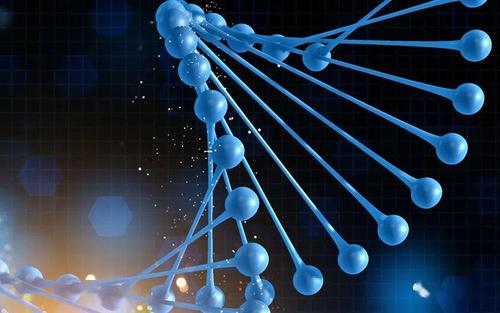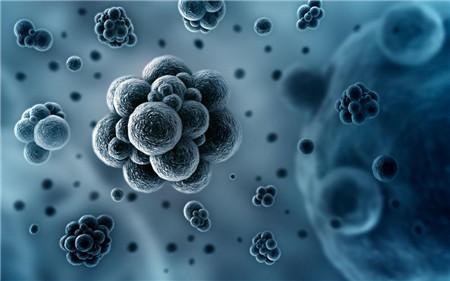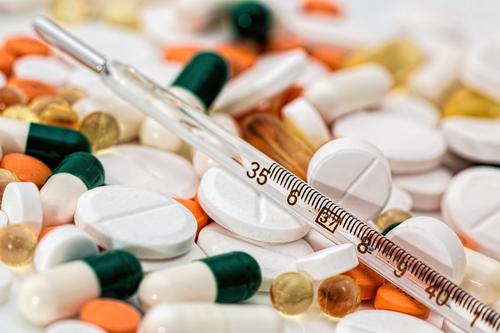
NEWS
最新消息
Advanced Version of New Antibiotics-Antimicrobial Peptide
- 分类:最新消息
- 作者:华讯知识产权
- 来源:
- 发布时间:2021-01-21 15:14
- 访问量:
【概要描述】Advanced Version of New Antibiotics-Antimicrobial Peptide In 1929, British bacteriologist Fleming discovered penicillin for the first time. Since then, Antibiotics have officially entered the stage of history. During the Second World War, penicillin became a very important strategic material to prevent war wounds from being infected. However, with the development of history, more and more antibiotics have sprung up, and the fatal problems (drug resistance) caused by the large-scale application of antibiotics have gradually emerged seriously threatening people's health. Finding new types of antibiotics is an effective way to solve the problem of resistance. Antimicrobial peptide (ABP) originally refers to a class of basic peptides with antibacterial activity induced in insects. The molecular weight is about 2000-7000 and consists of 20-60 amino acid residues. According to its structure, it can be roughly divided into four categories: spiral, sheet, extended and ring. Some ABPs consist entirely of a spiral or sheet, while others have a more complex structure. The characteristic of extended peptides is the lack of recognizable structural motifs. However, they contain large amounts of specific amino acids such as arginine, tryptophan, glycine and histidine. The antibacterial mechanism of traditional antibiotics is that the antibiotics bind to the receptors of specific parts of the pathogen, so that the normal structure of the pathogen is destroyed or some biosynthesis is blocked, in order to achieve antibacterial or bactericidal effects. When the target site of its action changes, the antibiotic will lose its antibacterial effect, which is the main reason why bacteria develop resistance to antibiotics. The most common mechanism of action of ABP is to destroy the membrane potential, change the membrane permeability, and leak metabolites by binding to the cell membrane, directly destroy the pathogen cell membrane and kill bacteria, so it is not easy to develop drug resistance, Moreover, ABP also has the advantages of high antibacterial activity, wide antibacterial spectrum, many types, and a wide range of options, so it is considered to have broad application prospects in the pharmaceutical industry. In addition, a unique feature of many ABPs is their multiple mechanisms of action. For example, the antimicrobial peptide LL-37 that exists in the human body. The most common mechanism of action is to act on bacterial cell membranes, and it can also regulate inflammation and inflammation Anti-inflammatory immune response. The ability of ABP to function through multiple mechanisms and different pathways not only increases its antibacterial activity, but also reduces the tendency to develop drug resistance. Exercising effects through multiple channels can greatly reduce the possibility of bacteria acquiring multiple mutations at the same time, which makes ABP have a good therapeutic potential in drug resistance. In addition, because many ABPs act on the cell membrane sites of bacteria, bacteria must completely redesign their cell membrane structure to undergo mutations, and it takes a long time for multiple mutations to occur. In cancer chemotherapy, it is common to use multiple drugs with different mechanisms to limit the resistance of tumors. However, the use of multiple drugs increases the potential side effects and toxicity of chemotherapy. Therefore, a single ABP drug with multiple complementary mechanisms may have the same antibacterial effect with minimal side effects. Although there are currently a large number of natural ABPs that have excellent therapeutic effects, there are still many potential modifications that can be used to generate new ABPs. The global call for action to develop new antibacterial compounds to avoid the next antibacterial crisis.
Advanced Version of New Antibiotics-Antimicrobial Peptide
【概要描述】Advanced Version of New Antibiotics-Antimicrobial Peptide
In 1929, British bacteriologist Fleming discovered penicillin for the first time. Since then, Antibiotics have officially entered the stage of history. During the Second World War, penicillin became a very important strategic material to prevent war wounds from being infected. However, with the development of history, more and more antibiotics have sprung up, and the fatal problems (drug resistance) caused by the large-scale application of antibiotics have gradually emerged seriously threatening people's health. Finding new types of antibiotics is an effective way to solve the problem of resistance.
Antimicrobial peptide (ABP) originally refers to a class of basic peptides with antibacterial activity induced in insects. The molecular weight is about 2000-7000 and consists of 20-60 amino acid residues. According to its structure, it can be roughly divided into four categories: spiral, sheet, extended and ring. Some ABPs consist entirely of a spiral or sheet, while others have a more complex structure. The characteristic of extended peptides is the lack of recognizable structural motifs. However, they contain large amounts of specific amino acids such as arginine, tryptophan, glycine and histidine.
The antibacterial mechanism of traditional antibiotics is that the antibiotics bind to the receptors of specific parts of the pathogen, so that the normal structure of the pathogen is destroyed or some biosynthesis is blocked, in order to achieve antibacterial or bactericidal effects. When the target site of its action changes, the antibiotic will lose its antibacterial effect, which is the main reason why bacteria develop resistance to antibiotics. The most common mechanism of action of ABP is to destroy the membrane potential, change the membrane permeability, and leak metabolites by binding to the cell membrane, directly destroy the pathogen cell membrane and kill bacteria, so it is not easy to develop drug resistance, Moreover, ABP also has the advantages of high antibacterial activity, wide antibacterial spectrum, many types, and a wide range of options, so it is considered to have broad application prospects in the pharmaceutical industry.
In addition, a unique feature of many ABPs is their multiple mechanisms of action. For example, the antimicrobial peptide LL-37 that exists in the human body. The most common mechanism of action is to act on bacterial cell membranes, and it can also regulate inflammation and inflammation Anti-inflammatory immune response. The ability of ABP to function through multiple mechanisms and different pathways not only increases its antibacterial activity, but also reduces the tendency to develop drug resistance. Exercising effects through multiple channels can greatly reduce the possibility of bacteria acquiring multiple mutations at the same time, which makes ABP have a good therapeutic potential in drug resistance. In addition, because many ABPs act on the cell membrane sites of bacteria, bacteria must completely redesign their cell membrane structure to undergo mutations, and it takes a long time for multiple mutations to occur. In cancer chemotherapy, it is common to use multiple drugs with different mechanisms to limit the resistance of tumors. However, the use of multiple drugs increases the potential side effects and toxicity of chemotherapy. Therefore, a single ABP drug with multiple complementary mechanisms may have the same antibacterial effect with minimal side effects.
Although there are currently a large number of natural ABPs that have excellent therapeutic effects, there are still many potential modifications that can be used to generate new ABPs. The global call for action to develop new antibacterial compounds to avoid the next antibacterial crisis.
- 分类:最新消息
- 作者:华讯知识产权
- 来源:
- 发布时间:2021-01-21 15:14
- 访问量:
Advanced Version of New Antibiotics-Antimicrobial Peptide
2021.1.21
In 1929, British bacteriologist Fleming discovered penicillin for the first time. Since then, Antibiotics have officially entered the stage of history. During the Second World War, penicillin became a very important strategic material to prevent war wounds from being infected. However, with the development of history, more and more antibiotics have sprung up, and the fatal problems (drug resistance) caused by the large-scale application of antibiotics have gradually emerged seriously threatening people's health. Finding new types of antibiotics is an effective way to solve the problem of resistance.

Antimicrobial peptide (ABP) originally refers to a class of basic peptides with antibacterial activity induced in insects. The molecular weight is about 2000-7000 and consists of 20-60 amino acid residues. According to its structure, it can be roughly divided into four categories: spiral, sheet, extended and ring. Some ABPs consist entirely of a spiral or sheet, while others have a more complex structure. The characteristic of extended peptides is the lack of recognizable structural motifs. However, they contain large amounts of specific amino acids such as arginine, tryptophan, glycine and histidine.
The antibacterial mechanism of traditional antibiotics is that the antibiotics bind to the receptors of specific parts of the pathogen, so that the normal structure of the pathogen is destroyed or some biosynthesis is blocked, in order to achieve antibacterial or bactericidal effects. When the target site of its action changes, the antibiotic will lose its antibacterial effect, which is the main reason why bacteria develop resistance to antibiotics. The most common mechanism of action of ABP is to destroy the membrane potential, change the membrane permeability, and leak metabolites by binding to the cell membrane, directly destroy the pathogen cell membrane and kill bacteria, so it is not easy to develop drug resistance, Moreover, ABP also has the advantages of high antibacterial activity, wide antibacterial spectrum, many types, and a wide range of options, so it is considered to have broad application prospects in the pharmaceutical industry.

In addition, a unique feature of many ABPs is their multiple mechanisms of action. For example, the antimicrobial peptide LL-37 that exists in the human body. The most common mechanism of action is to act on bacterial cell membranes, and it can also regulate inflammation and inflammation Anti-inflammatory immune response. The ability of ABP to function through multiple mechanisms and different pathways not only increases its antibacterial activity, but also reduces the tendency to develop drug resistance. Exercising effects through multiple channels can greatly reduce the possibility of bacteria acquiring multiple mutations at the same time, which makes ABP have a good therapeutic potential in drug resistance. In addition, because many ABPs act on the cell membrane sites of bacteria, bacteria must completely redesign their cell membrane structure to undergo mutations, and it takes a long time for multiple mutations to occur. In cancer chemotherapy, it is common to use multiple drugs with different mechanisms to limit the resistance of tumors. However, the use of multiple drugs increases the potential side effects and toxicity of chemotherapy. Therefore, a single ABP drug with multiple complementary mechanisms may have the same antibacterial effect with minimal side effects.

Although there are currently a large number of natural ABPs that have excellent therapeutic effects, there are still many potential modifications that can be used to generate new ABPs. The global call for action to develop new antibacterial compounds to avoid the next antibacterial crisis.


美国联邦巡回上诉法院表示娇生公司 全球畅销精神分裂症药物的专利可能无效

注射用醋酸地加瑞克专利无效口审将于本月底进行

外观专利如何进行海外布局?










